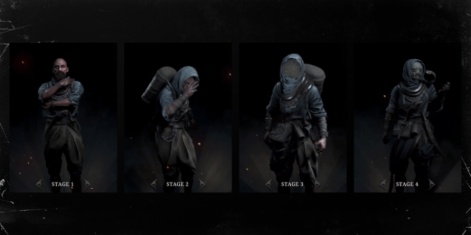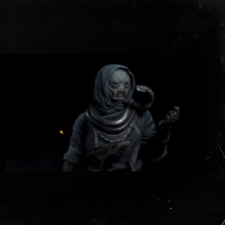Pocket Gamer Connects London was a massive success which saw more than 2400 guests visiting dozens of talks and panels. One such talk, by Crytek Senior Narrative Designer Bárbara Framil and Narrative Designer Bri Williams, saw the two discuss their experiences in designing narrative for live events in the company’s title Hunt: Showdown, but what can mobile game makers learn from the company’s approach?
Framil and Williams honed in on the company’s Serpent Moon event, which incorporated close cooperation with different teams at the company, utilising a variety of different methods to not just tell the story, but to give a sense of progression within the event.

The narrative team collaborated with the live design team to determine the direction of the story and what the team was hoping to sell as part of the event based on collected. They then incorporated the intent of the event into the narrative design and proposed potential mechanics to be used as part of the event based on narrative concepts, working closely to achieve a compromise between the different departments.
The narrative team then worked with the level design team to incorporate new objects and elements into the game to help tell the story while offering a new experience for players. This included opening the Kingsnake Mine, a new map which the team had yet to incorporate into the title. The teams also worked together on a new time of day, Serpent Hour incorporating the story directly into the level design while adding to the immersion and making players feel like they were part of the events.
The team released a new character, The Viper, as part of the events, incorporating the cosmetics directly to the evolving storyline of the event by letting players unlock new cosmetics as they earned event points.
"This event was supposed to have a different feeling than others, a bit more edgy. We had this idea of being different, edgy, in the sense of having a profession no other character had, so we settled on an assassin," said Framil.
“We kind of drew this parallel between being an assassin with this person who doesn’t have a real role in life because they’re not comfortable with who they are. By the end of the story they’ve grown comfortable in their skin and how they can use their skills for their own purpose.”

To this end, the narrative team and art and animation teams worked together to give a sense of the character’s evolution, with the stance progressing from protective to confident and various additional flourishes being added to the costume.
Finally, the team worked with the audio design team in order to create new audio which reflected the event, including working with the game’s in-house band, Port Sulphur.
The event proved to be a success, with over 136 million snake dens looted, 5.1 billion event points earned, and peak concurrent players of 38802 on PC alone.
What can mobile developers learn from the success of the event?
Many live service games across platforms include live events such as Serpent Moon, but often storytelling falls by the wayside. While players can unlock new cosmetics and lore through progressing and completing challenges as part of these events, Hunt: Showdown stands out in that it encourages participation and utilises a variety of different methods to enhance a sense of narrative progression and even urgency. Serpent Moon is just one chapter in evolving storyline which Williams has been working on, shining the spotlight on certain elements and characters which remain relatively minor, helping to effectively flesh out the world and resulting in intriguing the playerbase, inspiring a greater level of engagement.
Mobile developers, as well as game makers working on a variety of platforms, can take note of Crytek’s success with Serpent Moon. Gaming is unique among other forms of media in that it’s one that requires interaction for progress, and properly incorporating storytelling and narrative into live events can make them more engaging to the audience, who may spend more time playing in order to unlock not just cosmetics but to fully experience the storyline.
Earlier this month, we presented an opinion piece on the narrative issues common in free-to-play games, and how many of these games can continue to thrive on a lack of focus on storytelling.






















